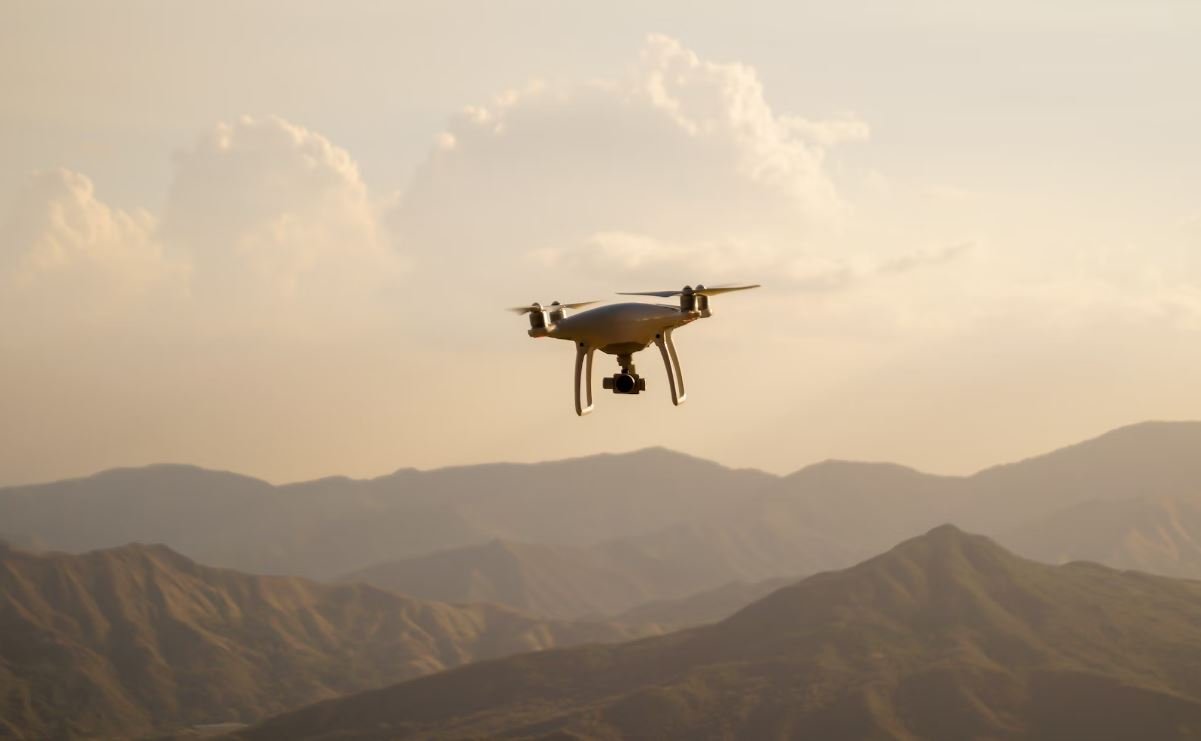Cybertruck: Vehicle to Grid
Electric vehicles (EVs) have gained significant popularity in recent years due to their environmental benefits and improved performance. The Cybertruck by Tesla is one such EV that has taken the automotive industry by storm. But what sets the Cybertruck apart is its capability to not only consume energy but also supply it back to the grid. This revolutionary technology, known as Vehicle to Grid (V2G), has the potential to transform our energy infrastructure and pave the way for a sustainable future.
Key Takeaways:
- The Cybertruck by Tesla offers Vehicle to Grid (V2G) technology.
- V2G enables Cybertruck owners to supply energy back to the grid.
- This technology has the potential to transform the energy infrastructure.
V2G technology allows Cybertruck owners to connect their vehicles to the power grid and use them as a source of electricity when needed. By utilizing the energy stored in the truck’s battery, owners can power their homes or sell excess electricity back to the grid. This feature makes the Cybertruck more than just a means of transportation, turning it into a mobile power station that can contribute to the overall energy supply.
*The Cybertruck’s V2G technology opens up the possibility for individuals to become energy providers, reducing reliance on traditional power plants.*
One of the advantages of V2G technology is its potential to stabilize the electric grid. As EV adoption increases, the demand for electricity also rises. With V2G-enabled vehicles like the Cybertruck, the excess energy stored in the vehicle batteries can be fed back into the grid during peak demand periods. This helps balance supply and demand, reducing strain on the grid and potentially avoiding blackouts.
Advantages of V2G technology:
- Stabilizes the electric grid during periods of high demand.
- Reduces strain on traditional power plants.
- Contributes to a more sustainable and reliable energy infrastructure.
*By utilizing the energy stored in EVs during peak demand, V2G technology can substantially reduce the need for fossil fuel-based power plants, leading to a greener energy mix.*
Table 1: Comparison of Cybertruck V2G Capability
| Cybertruck Model | V2G Capable | Battery Capacity |
|---|---|---|
| Cybertruck Single Motor | Yes | 250 kWh |
| Cybertruck Dual Motor | Yes | 300 kWh |
| Cybertruck Tri Motor | Yes | 500 kWh |
The sustainability aspect of V2G technology cannot be overlooked. By using electricity stored in EVs, we can reduce our reliance on fossil fuels and lower our carbon footprint. Additionally, V2G technology promotes the adoption of renewable energy sources. EV owners can charge their vehicles with solar panels or wind turbines, further reducing the environmental impact associated with electricity generation.
*V2G technology aligns perfectly with the global push for renewable energy and sustainable practices.*
Table 2: Comparison of Cybertruck Range and Charging Time
| Cybertruck Model | Range | Charging Time (0-100%) |
|---|---|---|
| Cybertruck Single Motor | 250+ miles | Less than 2 hours |
| Cybertruck Dual Motor | 300+ miles | Less than 3 hours |
| Cybertruck Tri Motor | 500+ miles | Less than 4 hours |
V2G technology also provides economic advantages for Cybertruck owners. By selling excess electricity back to the grid, owners can offset the cost of charging their vehicles and even generate a passive income. This incentivizes the adoption of V2G-enabled EVs, as they become not only a transportation solution but also an investment that pays off over time.
Economic advantages of V2G technology:
- Offsets the cost of charging EVs.
- Creates opportunities for generating passive income.
- Encourages EV adoption and investment.
*The revenue potential of V2G-enabled EVs offers a compelling case for individuals and businesses to transition to sustainable transportation solutions.*
Table 3: Expected Energy Contribution of Cybertruck Models
| Cybertruck Model | Estimated Energy Contribution (kWh/year) |
|---|---|
| Cybertruck Single Motor | 8,000 – 11,000 |
| Cybertruck Dual Motor | 9,000 – 13,000 |
| Cybertruck Tri Motor | 12,000 – 16,000 |
The Cybertruck’s V2G technology represents a significant step forward in the evolution of electric vehicles. By enabling vehicle owners to become energy suppliers, V2G has the potential to revolutionize the energy landscape, making it more sustainable and resilient. Embracing this technology will not only benefit individual Cybertruck owners but also contribute to a greener future for all.

Cybertruck: Vehicle to Grid – Common Misconceptions
Misconception 1: Cybertruck is just like any other electric vehicle
Some people believe that Cybertruck is just another electric vehicle on the market, without any significant distinguishing features. However, this is not the case as the Cybertruck offers a unique “Vehicle to Grid” (V2G) capability, allowing the vehicle to not only consume energy but also provide energy back to the power grid.
- Cybertruck has the ability to supply power to homes during power outages
- The V2G feature can potentially reduce energy costs for Cybertruck owners
- The ability to use Cybertruck as a power source opens up a range of new applications and possibilities
Misconception 2: The V2G technology is unreliable and inefficient
There is a misconception that the Vehicle to Grid technology is unreliable and inefficient. However, this belief is often based on outdated information or misunderstandings. In reality, V2G technology has made significant progress in recent years and is now more reliable and efficient than ever before.
- Ongoing research and development continue to improve the reliability and efficiency of V2G systems
- V2G technology has been successfully tested and implemented in various real-world scenarios
- The V2G system can intelligently manage and balance the energy flow, ensuring optimal usage and minimal waste
Misconception 3: Cybertruck’s V2G feature is only useful in emergencies
Many people believe that the Vehicle to Grid feature in the Cybertruck is only useful in emergency situations, such as power outages or natural disasters. However, this limited view fails to recognize the broader potential and everyday benefits that V2G technology offers.
- Cybertruck’s V2G capability can be utilized to reduce peak energy demand on the power grid
- Owners can sell excess energy back to the grid, potentially earning revenue or energy credits
- The V2G technology allows for greater energy independence and flexibility for both individuals and communities
Misconception 4: All electric vehicles can be used for Vehicle to Grid
Another common misconception is that all electric vehicles are capable of Vehicle to Grid functionality. While it is true that many electric vehicles can benefit from V2G technology, not all of them are equipped with the necessary hardware and software to support bidirectional energy flow.
- Vehicle to Grid capability is not standard in all electric vehicles
- The Cybertruck’s design and engineering specifically integrate the V2G feature
- The V2G capability requires a robust battery system and bidirectional charging infrastructure
Misconception 5: The V2G feature will significantly decrease the Cybertruck’s driving range
Many people fear that utilizing the Vehicle to Grid feature will greatly reduce the driving range of the Cybertruck, making it less practical for everyday use. However, advancements in battery technology and intelligent energy management systems have minimized the impact on driving range.
- Software algorithms optimize power flow to maintain an adequate driving range while still providing grid support
- The V2G technology is designed to prevent excessive battery drain, ensuring sufficient energy for regular driving needs
- The driving range reduction is typically modest and can be mitigated through proper planning and charging strategies

The introduction of electric vehicles (EVs) has revolutionized the automotive industry, offering a sustainable and eco-friendly alternative to traditional gasoline-powered cars. Among them, the Cybertruck has garnered immense attention for its bold design and innovative features. However, what sets the Cybertruck apart is its ability to leverage Vehicle-to-Grid (V2G) technology. V2G allows EVs to not only consume power from the grid but also to return excess energy back to it when needed. In this article, we will explore various aspects of V2G technology and its implications for the Cybertruck.
1. Energy Stored: Cybertruck vs. Average American Home
Have you ever wondered about the energy storage capacity of a Cybertruck compared to the average American home? The Cybertruck, with its massive battery pack, can store up to 200 kWh of energy, equivalent to the average daily usage of a U.S. household.
2. Energy Returned to the Grid: Cybertruck
The Cybertruck’s V2G capability enables it to return excess energy back to the grid. On average, a Cybertruck can provide approximately 20 kWh of power back to the grid, supplementing the energy demands during peak load periods.
3. Cost Savings: Cybertruck V2G vs. Traditional Grid Utilization
Through V2G technology, the Cybertruck can not only save energy but also reduce costs. By returning excess energy to the grid during peak times, Cybertruck owners can potentially earn credits or monetary compensation, effectively reducing their electricity bills.
4. Frequency Regulation: Impact of Cybertruck V2G
Frequency regulation is crucial for maintaining grid stability. The Cybertruck’s V2G capability allows it to participate in frequency regulation, providing the grid with a reliable and flexible energy source to manage fluctuations in power demand.
5. Carbon Footprint: V2G-Powered Cybertruck vs. Traditional Vehicles
Transportation is a significant contributor to greenhouse gas emissions. By utilizing V2G technology, the Cybertruck can play a vital role in reducing carbon emissions. Studies have shown that the adoption of V2G-enabled vehicles, like the Cybertruck, has the potential to significantly reduce overall carbon footprints.
6. Emergency Backup Power: Cybertruck V2G
In times of emergencies or power outages, the Cybertruck equipped with V2G technology can serve as a reliable backup power source. With its high-capacity battery pack, the Cybertruck can provide electricity to critical infrastructure or even power an entire household.
7. Grid Infrastructure Support: Cybertruck V2G
The integration of V2G technology requires a well-functioning grid infrastructure. The Cybertruck, with its V2G capability, incentivizes the development of a robust grid infrastructure, ensuring efficient bidirectional power flow and enabling the widespread adoption of renewable energy sources.
8. EV Adoption Incentives: Cybertruck V2G
The Cybertruck’s V2G capabilities offer additional incentives for potential EV owners. Governments and utility companies could provide incentives, such as tax credits or reduced electricity rates, to encourage more individuals to adopt V2G-enabled vehicles like the Cybertruck.
9. Smart Home Integration: Cybertruck V2G
V2G technology opens up possibilities for integration with smart home systems. Through advanced automation, Cybertruck owners can optimize their energy usage, balancing home power demands with energy storage and grid requirements, further enhancing energy efficiency.
10. V2G Infrastructure Advancements: Cybertruck
As V2G technology continues to advance, so does the supporting infrastructure. The Cybertruck’s integration with the evolving V2G infrastructure will contribute to improved grid stability, energy management, and sustainable transportation systems.
In this age of energy transition, the Cybertruck’s Vehicle-to-Grid integration presents a paradigm shift in the way we utilize and interact with energy. By leveraging the power of V2G technology, the Cybertruck not only revolutionizes the conventional transportation sector but also paves the way for a greener and more sustainable future.
Frequently Asked Questions
Cybertruck: Vehicle to Grid
What is the Cybertruck?
The Cybertruck is an upcoming electric pickup truck manufactured by Tesla Inc. It features a stainless steel exoskeleton, all-wheel drive capability, and advanced self-driving capabilities.
What is Vehicle to Grid technology?
Vehicle to Grid (V2G) technology allows electric vehicles, like the Cybertruck, to not only draw power from the grid but also feed excess energy back into the grid. This enables the vehicle’s energy to be used to power homes or businesses during peak demand periods or power outages.
How does Vehicle to Grid charging work?
With Vehicle to Grid charging, the Cybertruck is connected to the power grid via a special charging system. This system allows the vehicle’s battery to charge from the grid when electricity prices are low and demand is low. Conversely, when electricity prices are high or demand is high, the energy stored in the Cybertruck’s battery can be used to power homes or businesses.
What are the benefits of Vehicle to Grid integration?
Vehicle to Grid integration provides several benefits, including: 1) Utilizing excess vehicle battery capacity to power homes or businesses during peak times, reducing strain on the grid. 2) Generating additional income for electric vehicle owners by selling excess energy back to the grid. 3) Increasing renewable energy utilization and reducing greenhouse gas emissions by optimizing energy distribution.
Is the Cybertruck equipped with Vehicle to Grid capability?
At this time, Tesla has not officially announced whether the Cybertruck will come equipped with Vehicle to Grid capability. However, given Tesla’s focus on innovation and sustainable energy solutions, it is possible that the Cybertruck may offer this feature.
What is the range of the Cybertruck’s battery?
Tesla has stated that the Cybertruck will be available with different battery options, offering ranges of up to 500+ miles on a single charge.
How long does it take to charge the Cybertruck’s battery?
Charging times for the Cybertruck’s battery will vary depending on the charging method and battery capacity. Using Tesla’s Supercharger network, the Cybertruck can achieve up to 80% charge in approximately 30-40 minutes.
Can the Cybertruck be charged at home?
Yes, the Cybertruck can be charged at home using a standard electrical outlet, although it will take significantly longer to charge compared to using a dedicated home charging station or a Tesla Supercharger.
What safety features does the Cybertruck offer?
While specific safety features of the Cybertruck have not been officially released, Tesla vehicles generally offer a range of advanced safety technologies such as Autopilot, collision avoidance systems, and reinforced body structures to provide enhanced protection for occupants.
When will the Cybertruck be available for purchase?
Tesla plans to start production of the Cybertruck in late 2021, with deliveries expected to begin shortly after.




